Politics
/ArcaMax
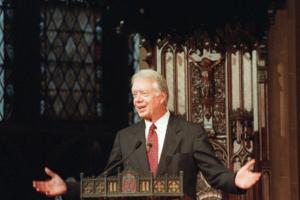
Commentary: Jimmy Carter's election was a high point in resurgence of progressive evangelicals
In November 1973, a group of evangelicals met at the YMCA on Wabash Avenue and adopted the Chicago Declaration of Evangelical Social Concern. Echoing the themes of progressive evangelicalism from decades past, the declaration decried income inequality and militarism as well as the persistence of racism and hunger in an affluent society. The ...Read more

Commentary: Jimmy Carter worked tirelessly to eradicate a deadly parasite in Africa
Jimmy Carter was a president, a peacemaker, a public health champion — and my friend.
When he left the White House, Carter used the power of his name, character and influence to work on challenges that were too obscure or daunting for others to deal with. I believe he did it because he felt it was the right thing to do. His humble beginnings ...Read more

Commentary: It's been a banner year for animals
When you think back on 2024, what stands out? The total solar eclipse? The Olympics? The presidential election? For animals, 2024 was full of milestones that stopped suffering and saved lives.
Small animals scored several massive wins this year. The National Institutes of Health (NIH) stopped funding the most common type of sepsis experiments ...Read more
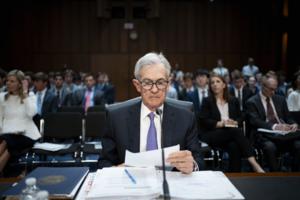
Commentary: Politicians use inflation to target the American way of life
“Inflation is always and everywhere a monetary phenomenon,” Milton Friedman once said. In other words, don’t blame greed — blame the politicians who control the money supply.
Ron Paul called inflation a “hidden tax” on Americans. Today, politicians have used it as a weapon to destroy the American way of life.
The last four years ...Read more
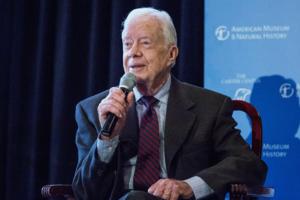
Francis Wilkinson: Jimmy Carter just got better with age
In 2006, Jimmy Carter published a controversial and best-selling book on Palestine with the word “apartheid” in the title. Then he went on a whirlwind book tour, captured on film by Jonathan Demme, to promote it. Carter spoke, signed books and calmly rebutted criticism and attacks with his trademark Sunday-school demeanor. Allies, including ...Read more
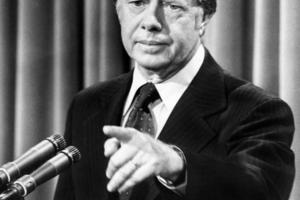
Editorial: Jimmy Carter: Good man, middling president
“I will never lie to you.” So went the plain-spoken refrain of Jimmy Carter, the man from Plains, whose improbable century-long journey came to an end on Sunday. Carter became the 39th president in no small part because voters felt that simple offer of honesty was sufficient after the turmoil of the Richard Nixon era. Unfortunately for ...Read more
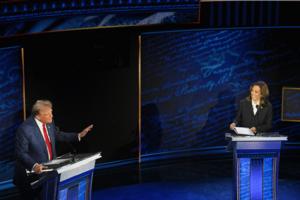
Doyle McManus: Mea culpa: I got some things wrong in 2024. At least I hope I did
WASHINGTON — I spent much of 2024 warning readers that a second Trump presidency would do serious damage to American institutions, beginning with democracy and the rule of law.
"The former president neither understands nor respects the Constitution," I wrote. "He would use the powers of the federal government as an instrument of his whims, ...Read more
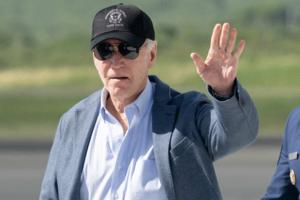
Editorial: When the death penalty is just -- Capital punishment is fitting for terrorism and politically motivated mass murder
President Joe Biden’s commutation of the death sentences of 37 out of 40 men on federal death row in advance of a Trump administration that’s eager to speed up executions was a meaningful act of principle, as was keeping three politically motivated mass murders waiting for the fatal needle.
The problems with the death penalty are well known...Read more

Dan Rodricks: One scarf, two kinds of people and 10 things nobody asked about
Nobody asked me, but there are basically two kinds of people in this world: One sees a nearly new scarf on a city sidewalk, picks it up and ties it to a drain pipe near where it was found (on Baltimore’s Fallsway, under the Orleans Street Viaduct) in the hope that its owner will find it there. The other takes it home, wraps it up and gives it ...Read more
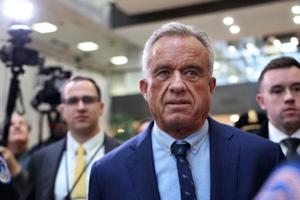
Commentary: My son has autism. His life tells a story RFK Jr. ignores
Among President-elect Trump’s unconventional Cabinet choices, the potential appointment of one in particular worries me: Robert F. Kennedy Jr. as secretary of Health and Human Services.
RFK Jr. has long espoused anti-vaccine views, and they are promoted by his nonprofit Children’s Health Defense. During his presidential campaign, he ...Read more
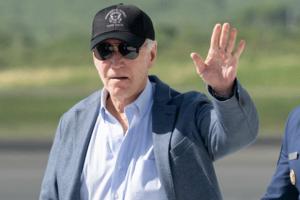
Patricia Murphy: Being old in Washington got very old in 2024
A shocking story about a Texas congresswoman came out last week. A local reporter got a tip that, after quietly missing months of votes on Capitol Hill, Republican U.S. Rep. Kay Granger had moved into Traditions Senior Living, an assisted-living facility in Dallas.
When the reporter went to the facility to ask how Granger planned to vote on the...Read more

Commentary: Bhopal -- After 40 years, the danger remains
Forty years ago this month, a Union Carbide pesticide factory in Bhopal, India, sprung a toxic gas leak, exposing half a million people to toxic fumes. Thousands of people lost their lives in the immediate aftermath, with the death toll climbing to more than 20,000 over the next two decades. Countless others, including children of survivors, ...Read more
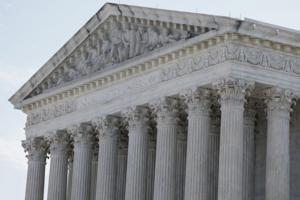
Editorial: Eroding trust in the courts can be solved at the voting booth
A new Gallup poll shows Americans have about as much confidence in our legal system as people living in democracy-challenged nations like Syria, Venezuela, and the Democratic Republic of the Congo. That’s a shame but also understandable given how politicized our courts have become, and how too many judges have questionable ethics.
Americans�...Read more
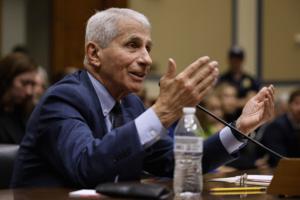
Commentary: Journalists failed to ask Dr. Anthony Fauci the hard questions during the pandemic
In the midst of a flurry of presidential pardons and commutations by President Joe Biden, there is talk in the White House of preemptive pardons for people who could be at risk of prosecution by the next administration.
One of the top names reportedly mentioned is former chief medical adviser to Biden during COVID-19, Dr. Anthony Fauci. Fauci�...Read more
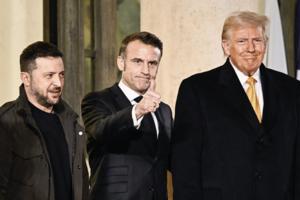
Commentary: The true Trump threat
Many Americans fear what Donald Trump will do after assuming the presidency in January — and understandably so. Trump's pathological self-absorption has no place in American government, let alone at its very top.
But the specific type of threat Trump poses is often misunderstood. Like all presidents, his domestic powers are limited. He will ...Read more
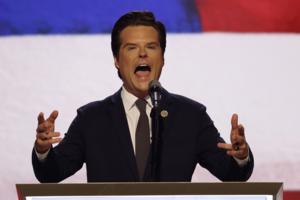
Editorial: The Matt Gaetz facts -- Former MAGA congressman's ills laid out in House report
After much back-and-forth, which the former congressman used to try to sow doubt and muddy the waters, the House Ethics Committee has released the full report of its investigation into Matt Gaetz, and it is not pretty, which is why it was so important for it to come out. Thank you to the Republicans on the panel who voted against the wishes of ...Read more
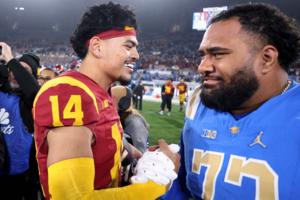
Commentary: Football isn't just violence. It's democracy's schoolhouse
The ripple effects of the brawl that broke out between Ohio State and Michigan football players in late November are still spreading. A massive scrum ensued when celebrating Michigan players tried to plant a team flag on Ohio State’s field.
Are the fines levied on each team — $100,000 — too low for high-stakes college football? Was the ...Read more
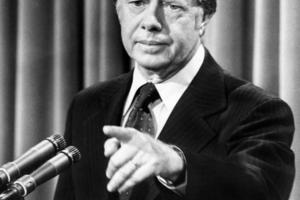
Editorial: Jimmy Carter's 100 years: A life of service and honor
As we wrote nearly two years ago when Jimmy Carter entered hospice care, “He was not a great president like Washington or Lincoln. Indeed, Carter had a troubled presidency for four years, but had a very successful post presidency for more than 40 years, promoting peace, democracy, human rights and development.”
Hospice generally means time ...Read more
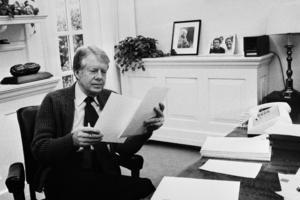
Editorial: For Jimmy Carter, the presidency was prologue
He left office in a stunning landslide defeat after a single term as the nation’s 39th president. But Jimmy Carter wasn’t done yet.
Instead of withdrawing quietly from public life as most former presidents have, James Earl Carter Jr. went to work. As a champion for democracy, human rights, public health and housing the poor, he has been ...Read more
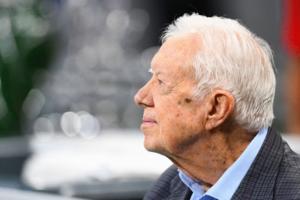
Mark Z. Barabak: History gets Jimmy Carter wrong, both underrated and overrated
In the lives of public figures a tale often takes hold and that narrative becomes their story.
In the case of Jimmy Carter, it goes like this: A humble peanut farmer and former Georgia governor defies extraordinary odds and wins the White House, through a combination of virtue, decency and a post-Watergate political cleansing.
Over the next ...Read more


























































